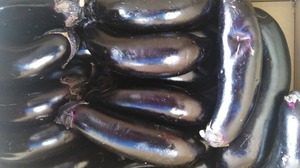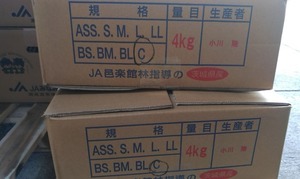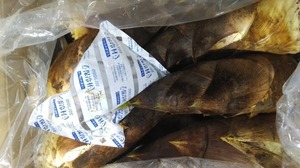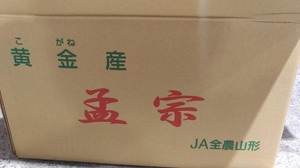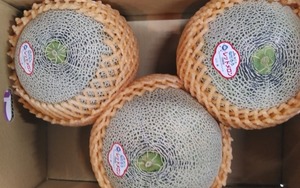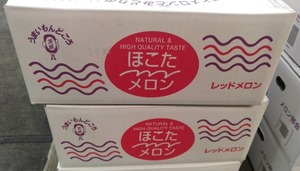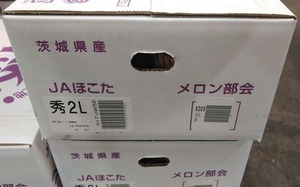It is located approximately 20 km from the city center, and is approximately the same distance from Kichijoji, which is a popular place to live. Despite its proximity to the city center, the city is full of nature and parks. There are also plenty of sports facilities, libraries, childcare support facilities, hospitals, etc. There are many flower beds in Matsudo City that are maintained and managed by citizens. As part of its flower-filled campaign, the city is promoting the creation of a city filled with flowers, in which citizens are responsible for day-to-day flower bed management, and the city provides support such as providing flower seedlings. In order to maintain and manage flower beds neatly, weeding and watering are indispensable, but there is great joy in seeing the flower beds beautifully colored with flowers that we have grown ourselves.
【製品名(商品名)】
松戸かぶ
【種類】
Brassica rapa var. rapa
【生産地】
千葉県松戸市(松戸㋪組合)
【名前の由来】
Because the root part looks like a head (rank).
【主な特徴】
In Matsudo City, Chiba Prefecture, it seems that urban-type suburban agriculture is being carried out against the background of the location close to a large consumption area. Tourist agriculture such as pear, grape, green soybean, and sweet potato digging seems to be popular. There are three inland industrial parks in the city: Kita-Matsudo, Minoridai, and Matsuhidai. It seems that he has been trying to attract companies on the condition that the industry does not emit smoke and pollution, and has also tried to accumulate industry. Also, in recent years, the content industry promotion project has been certified as a regional revitalization plan by the Cabinet Office, and it seems that the city is actively working to attract the content industry. The city reportedly had 1.21 million tourist arrivals in 2016. In spring, various events are held in each area, such as cherry blossom festivals, fireworks festivals, and Matsudo festivals held at five locations in the city. In the Matsudo area, there is the "Tojo Residence", which is designated as an important cultural property of the country. In the Yagiri area, the ferry boat "Yagiri no Watashi" that has been in operation since the Edo period still remains. The Kogane area has many historical and cultural resources such as "Hodoji Temple" and "Tozenji Temple". In addition, the national government is promoting efforts to strengthen the competitiveness of agriculture by making agriculture a growth industry. However, the foundation of agricultural management is weakening due to a shortage of farmers, a decrease in agricultural land due to urbanization, and the promotion of free trade in agricultural products such as the TPP(環太平洋パートナーシップ). Efforts to hand over agriculture to the next generation and strengthening of farm management power are required. In addition, in order to revitalize the society and regions with a declining population, the Basic Plan for Food, Agriculture and Rural Areas (based on the Basic Act on Food, Agriculture and Rural Areas, establishes policies that the government should work on in the medium to long term regarding food, agriculture and rural areas). Based on changes in the situation, it is supposed to be changed approximately every five years.On March 31, 2020 (Tuesday), a new basic plan for food, agriculture, and rural areas was approved by the Cabinet.) We are working to turn the agriculture and food industries into growth industries and to promote the maintenance and demonstration of their multifaceted functions. As a measure for the sustainable development of agriculture, management development through the incorporation of agricultural management, etc., and full operation of the Agricultural Land Intermediate Management Organization (a "reliable intermediate receiver of farmland" established in all prefectures in 2014) to become a bearer collection of farmland. It seems that they are working on consolidation, consolidation, and restructuring of agriculture-related organizations (agricultural cooperatives and agricultural committees). In addition, measures to ensure a stable supply of food include ensuring food safety, promoting food education and expanding consumption of domestic agricultural products, promoting the sixth industrialization, exporting agricultural, forestry and fishery products and foods, and promoting the overseas expansion of the food industry. , the production, processing and distribution process of agricultural products. It seems that they are working on building a value chain in It is well known that there is a growing public awareness of food safety and security, and that many consumers choose domestic products based on safety, quality, freshness, etc. In addition, the number of people who place importance on their diet as an important point in their lives is increasing, and what they expect from agriculture is a greater supply of safe food and a supply of good-quality, fresh, and delicious food. There are many people who have high expectations for. Chiba Prefecture's agriculture promotion has produced a wide variety of agricultural, forestry and fishery products thanks to its warm climate and favorable location in the metropolitan area. It seems that the prefecture is making various efforts to realize "strong agriculture, forestry and fisheries that support the region". In the promotion of urban agriculture, in order to promote highly profitable agriculture, it seems that efforts are being made to support various farmers, make effective use of limited farmland, and create facilities for advanced use. Also, since mutual understanding between farmers and local residents is necessary for the promotion of urban agriculture, exchanges between farmers and local residents will also be promoted. Agricultural promotion in the Higashi Katsushika(Tokatsu)area: Located in the northwestern part of Chiba Prefecture, Matsudo City, Ichikawa City, Funabashi City, Noda City, It seems that there are nine cities, Kashiwa City, Nagareyama City, Abiko City, Kamagaya City, and Urayasu City (under the jurisdiction of the Higashi Katsushika(Tokatsu)Agricultural Office). The total area of the nine cities is 539.7 km2, which is 10.5% of Chiba Prefecture. In addition, the population is about 2.73 million people, accounting for about 44% of the population of Chiba Prefecture, and it is an area where urbanization is progressing even in Chiba Prefecture. Agriculture in the Higashi-Katsushika(Tokatsu)area is characterized by its suburban agricultural zone, and the basic promotion policy is to preserve excellent farmland and secure diverse farmers. Develop measures to promote urban agriculture in which farmers and citizens are in harmony. According to Chiba Prefecture's Basic Policy for Development of Areas for Promoting Agriculture, Higashi Katsushika(Tokatsu)Agricultural Office jurisdiction is It seems to be defined as a region. In addition, the city promotes the voluntary management improvement of farmers who train successors of agriculture, etc. seems to be growing. The training of certified farmers is important for the stable development of agriculture in Matsudo City. It seems that it is an initiative. As of May 2018, there are 165 certified farmers. In addition, it seems that he is promoting a field marriage business with the theme of "cultivating love and vegetables in the field". Through farm work, while getting to know each other's personalities, in addition to helping farmers find spouses, they aim to cultivate an understanding of agriculture among participants and discover new farmers. On November 20, 2022, the Matsudo City Council election (constant number of 44) due to the expiration of the term of office was voted, and it seems that the lineup of new members was decided at midnight on the 21st. Sixty-four candidates ran for office, and as a result of fierce verbal warfare, 12 of the 27 newcomers were elected for the first time, and it seems that six former employees have returned to office. On the other hand, it seems that three of the 29 incumbents have sworn to make a comeback. Yagiri green onion has won the Minister of Agriculture, Forestry and Fisheries Award three times at the National Agricultural Products Fair. In 2007, the Matsudo City Agricultural Cooperative Association acquired a regional collective trademark. On April 2, 2007, the Matsudo City Agricultural Cooperative applied to the Patent Office, and on December 7, 2003, "Yagiri green onion'' acquired a regional collective trademark as green onion produced in Yagiri, Matsudo City, Chiba Prefecture. It is said that green onions began to be actively cultivated in the Yagiri district around 1870 or 1871. When I received the seeds of "Senju green onion" from the former Tokyo Prefecture Shimosuna Village (now: Koto Ward, Tokyo) and cultivated it, the soil was cultivated with a moderate mixture of sand and dry soil with moisture washed away by the river. Since it was the most suitable for the season, plantings were expanded year by year, and it seems that it began to be sent to the market from around 1879 and 1880. According to the Agricultural Administration Division of the Matsudo City Economic Promotion Department, there are also Yagiri green onion, "Bozushirazu green onion,'' "Summer green onion,'' and "Oku (evening) green onion.'' Kogane (Consists of a relatively undulating plateau, the Saka River(A river in the Tonegawa River system that flows through the northwest. It is also used as part of the Kita-Chiba Headrace, flowing through the three cities of Nagareyama City, Matsudo City, and Ichikawa City, and pouring into the Edo River.)that runs along the east and west edges of the area, and the lowland area around the Fuji River(Class A river in the Tonegawa River system that flows through Matsudo City, Kashiwa City, and Nagareyama City). Farmlands are spreading in the urbanization control areas along the Saka River and the Fuji River. Also, during the Warring States period. Small it is an area with many historical heritages such as Hondoji Temple(It is the site of the mansion of the Genji's prestigious Hiraga family (it is famous that Tomomasa's father, Yoshinobu, followed Minamoto no Yoshitomo during the Heiji War). With the cooperation of Soya (1224-1291), the Jizo-do Hall in the territory was moved to this place and became the Hokke-do Hall. In the past, this mountain was called "Romon Sancho Sanbon'' along with Choeisan Honmonji Temple in Ikegami and Chokosan Myohonji Temple in Hikigaya, Kamakura.)and Tozenji Temple(Approximately 540 years ago, in 1481, Gyorensha Kyoyogutei Shoun of the Jodo sect of Buddhism (later founded by Shonin, initially in Negiuchi (1 km northeast of this area). , was moved to its current location and was considered one of the Kanto Eighteen Danrin in the early Edo period. It has a vast precinct and many buildings. In 1722, when major renovations were completed, the main hall, Hojo, and Kyozo (Kannondo) were built. ), bell tower, Kaisando, Shojoin, Toshogu, Chinjusha, Sanmon, Daimon, and 8 other dormitories, and more than 20 temples.), which prospered under the protection of the lord Takagi clan, and Kotokuji Temple(It is a Soto sect temple and is called Kinryuzan. Founded in 1462 by Takagi Echizen no Kami Tanehiro in Kurigasawa. In 1537, Takagi Shimo no Kami Taneyoshi moved the temple to this place and opened it. It was a big temple that received 200 koku of rice as a cemetery for successive generations of the Takagi clan. Received a letter of redemption of 20 koku of rice from the temple, and apparently had a branch temple nearby. It is the Seven Deities of Good Luck of Matsudo Historic Site Shichifukujin.), where the tombs of the Takagi clan are located.) area, there is "wake green onion'', which has been improved based on the cultivation technology that has been continued around Hondoji Temple since the Edo period, and was registered as a trademark on October 1, 2004. It is shipped as "hydrangea green onion" to Tokyo, Chiba, Saitama, etc. Regional collective trademarks are intended to maintain the credibility of business operators for local products, etc. Introduced on April 1, 2006 with the aim of revitalizing the economy, it relaxes the registration requirements for character trademarks consisting of regional names and product (service) names that are often used as "regional brands." System Data (trademark registration No. 5096123, Yagiri, Trademark: Yagiri green onion, Right holder: Tokatsu Central Agricultural Cooperative (Kamihongo, Matsudo City, Chiba Prefecture), Designated Goods or Designated Services: Green from Yagiri, Matsudo City, Chiba Prefecture onions.) In Matsudo, the production of green onions is thriving in various parts of the city. It is said to have been ranked 6th among municipalities nationwide, and 1st in Chiba Prefecture (produced in 2005). Among them, green onions produced in the Yagiri area are known nationwide as 'Yagiri green onion'. The best-loved Yagiri green onion seems to be in season in January and February. There's something fashionable about being ahead of Wase, and Yagiri green onion seems to hit the market all at once around November. Grown in ideal soil, this soft-eating, thick-rooted, excellent agricultural product is grown in soil rich in moisture, giving it a sweet, thick, and aromatic flavor. Furthermore, the sugar content is 11 to 12 degrees, which is almost the same as fruit. During cooking, allylic oxidation (an oxidation reaction that begins with hydrogen abstraction at the allylic position of unsaturated hydrocarbons), which is a pungent component, is caused by heat. Because it is conjugated and stabilized with electrons, it breaks easily compared to other C-H bonds). You can also enjoy the spiciness when you eat it raw, but when you cook it, the thick, smooth sweetness stands out. The secret to its popularity is its softness, freshness, and balance of sweetness and spiciness. Chiba Prefecture is the No. 1 nationwide with 60,000 tons of green onions. Ministry of Agriculture, Forestry and Fisheries, 2017 statistics. Incidentally, the production volume in Matsudo City, Chiba Prefecture in FY2006 was 7820 t. Phylogeny Group system "By this system, angiosperms (Angiospermae: New Engler, Magnoliophyta: Cronquist, Angiosperm: APG system) are divided into a group of primitive dicotyledonous plants, eudicotyledons, and monocotyledons. Monocotyledonous plant" Published in 1998. New classification system.In particular, from chloroplast DNA analysis to information. Sulfide (diallyl disulfide) (defense mechanism using the action of TRPA1) ≒ Allyl disulfide (C6H10S2) is said to have strong bactericidal and sedative effects. The entire city of Matsudo is a city planning area, and agriculture in Matsudo consists of both agricultural land within urbanization control areas and agricultural land within urbanization promotion areas. Farming is carried out on the farmland on the other side, and it has become a high-value-added agricultural management with a large amount of agricultural output relative to the area of cultivated land. Seems to be Using the Matsudo agricultural product brand symbol mark "Minori-chan", we are promoting safe and secure agricultural products and environmentally friendly agriculture, and are working on branding Matsudo agricultural products. The main agricultural products are “Yagiri green onion” and “Hydrangea green onion”, which are brand agricultural products representing Matsudo city. Highly rated. In addition, it seems that the sixth industrialization efforts are being made, such as the development of processed products using "hydrangea green onion". In recent years, efforts have been made to brand “green soybean,” which is one of the leading producers of green soybeans in Chiba Prefecture being produced. It has been a specialty pear production area since the Meiji era, and is known as the origin of 20th century pears. Currently, many varieties of pears are cultivated in the city, including Kosui Pear, Hosui Pear, Akizuki Pear, and Kaori Pear. Harvest from mid-August to mid-October Every year, many families and groups visit the tourist pear farm in search of fresh pears. Matsudo City, Chiba Prefecture is located within 20 kilometers from the city center, and is located in the Tokatsu area (northwestern part) of Chiba Prefecture. It borders Katsushika Ward, Edogawa Ward, and Misato City in Saitama Prefecture across the Edo River to the west, Ichikawa City to the south, Kamagaya City to the east, and Kashiwa City and Nagareyama City from the east to the north. The area of the city is 61.38 square kilometers, with 11.4 kilometers from east to west and 11.5 kilometers from north to south, forming a diamond shape. In addition, it is about 20 kilometers from the city center, about 30 minutes by train, and continues to develop as a residential city in the metropolitan area. Matsudo city is served by 6 railway lines: the JR Joban Line (interconnected with the Tokyo Metro Chiyoda Line), the JR Musashino Line, the Shin-Keisei Electric Railway, the Tobu Railway, the Ryutetsu Railway, and the Hokuso Railway. In addition, National Route 6 traverses almost the center along with the JR Joban Line, making it a major arterial road connecting the city center with the Joban and Tohoku areas. Furthermore, in March 2015, direct operation of some trains on the JR Joban Line to Tokyo, Shimbashi, and Shinagawa (nickname: Ueno Tokyo Line) was realized, making commuting to work, school, and outings in Tokyo and the direction of the Tokaido Line possible. , In addition to becoming more convenient, the Tokyo Outer Ring Road (Gaikan Expressway) between Misato Minami Interchange (IC) and Takaya Junction (JCT) opened on June 2, 2018, providing access to the bay area and Kanto region. It seems that it is expected to improve accessibility to the area, revitalize the local economy, alleviate traffic congestion in areas along the outer ring road, and improve the safety of community roads. Matsudo Citizen's Honor Award (established July 1, 1999): Masao Sugiura, Yagiri ferryman (awarded in August 1999) Born in 1923, from Matsudo City, lived in Yagiri, passed away in 2009 (85 years old), inheriting the tradition of the Yagiri Ferry that has continued since the Edo period, he worked hard to preserve the Yagiri Ferry for many years as a boatman, and seems to have spread the name of the city as a famous tourist attraction all over the country. In 1961, Takesada Tokugawa (1888-1957: Japanese naval officer, peerage. Final rank in the navy is Naval Engineer Lieutenant Admiral. Doctor of Engineering. Viscount. Professor at Tokyo Imperial University.) (now Tojogaoka Historical Park) is donated to the city. Tojo is the name of a place that originated in an old medieval castle. In 1884, Tojo mansion, the villa of Akitake Tokugawa-Shimizu, the last lord of the Mito clan, was built on this land, and it became the residence of the Matsudo Tokugawa family. Currently, the site of the former Matsudo Tokugawa family, including the Tojo residence, is maintained as "Tojogaoka Historical Park". In 2005, it was selected as one of the 100 Best Views of Fujimi in Kanto, and in 2007 as one of the 100 Best Historical Parks in Japan. The garden of Tojo mansion faces the south of the guest room of Tojo-tei, and is a Western-style garden with a wide, gently undulating lawn, rounded trimmed azaleas, and surrounded by trees. The lawn garden, which is often seen today, seems to have been fashionable since around 1884, when this garden was built, using Western-style tastes. In addition, the Western-style gardens from the early to the middle of the Meiji period are not well known, and there are many points that are not clear, but the Tojo mansion garden has a clear year of landscaping. A comparison of the photograph taken in 1889 and the current state confirms that the state at the time of landscaping is still well preserved. For these reasons, the Tojo mansion garden is one of the earliest surviving Western-style gardens, and is considered to be the forerunner of Japanese-Western style gardens, which became popular after 1887. Known as Brassica campestri, one of the seven spring herbs, turnips are said to have originated in Afghanistan and the Mediterranean region, and have been cultivated in Europe since pre-Christian times. Said to have been introduced to Japan from China during the Yayoi period, the Nihon Shoki (a Japanese history book written in the Nara period) is one of the oldest surviving historical books, along with the 'Kojiki', and is said to have been completed in the 4th year of Yoro.)” has a long history, including a description that Emperor Jito encouraged its cultivation as a crop to supplement the staple food. Turnip varieties, which are excellent agricultural products, can be broadly divided into large turnips (such as pickled sliced radishes) that are widely cultivated in western Japan and small turnips. There are various theories as to why small turnip cultivation took root in the northern part of the prefecture. It seems that there is also a strong theory that it crossed the Edogawa River and settled in the prefecture during the period. Chiba Prefecture is said to be the top producer of turnips in Japan. The harvest volume in 2016 was 36,000 tons, which was far ahead of Saitama Prefecture, which ranked second, and accounted for nearly 30% of the national share. The main turnip production areas in the prefecture are Kashiwa City, Tonosho Town in Katori District, and Matsudo City. Among them, Kashiwa City boasts the highest production volume in Japan by municipality, and shipments reach their peak as winter approaches. Urban suburban agriculture: Matsudo's agricultural products are famous for pear cultivation that began in the 20th century, yagiri green onions, hydrangea green onions, and Hinokuchi-Oishita small turnips. In addition, green soybean, strawberry, type of rape, cabbage, japanese white raddish, spinach, tomato, carrot, etc. As an aside, Katsushika-Kanamachi small turnip, Miyama small turnip: Brassica rapa, domestically harvested, Noguchi seedlings (Kosedo, Hanno City, Saitama Prefecture) in 1951. From the 1955s to 1940s, it has been awarded the Minister of Agriculture and Forestry Award in the "Kanamachi style small turnip category" sponsored by the Japan Seedlings Association / National Species Examination Committee. Tokinashi small turnip: Tsuru new seedlings (Chuo, Matsumoto City, Nagano Prefecture), high-quality Goku-wase small turnips that can be thrown at any time of the year. Suitable for growing in plastic tunnel. The roots are oblate with a diameter of 4 to 5 cm, uniform, and have few root splits. The skin is pure white and shiny, and the flesh is soft and rich in sweetness, making it ideal for pickles and salads.


